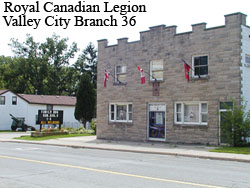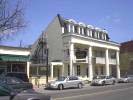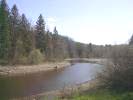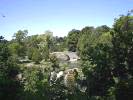| Source: September 1989 Heritage News Vol.1 No.1

In 1800, Dundas still slumbered in nameless obscurity. Simcoe's
garrison town was still an unoccupied sixty acre reserve. Only a few
widely scattered log cabins existed in the valley, most of them near the
junction of the trails that led to Niagara, Ancaster, Waterloo, and York.
This corner is today the Town Hall corner. There were only 45 people, none
of whom ever dreamed that there might be a town here some day. Back in
1791, The Constitutional Act split the province of Quebec into Upper and
Lower Canada, with a Governor General over both, and a Lieutenant Governor
for each. For Upper Canada, Britain sent John Graves Simcoe, who had been
Lieut. Colonel in command of the Queen's Rangers. He arrived at Kingston
July 6, 1792 and three days later swore in his newly chosen executive
council.
On July 16, 1792 Simcoe's proclamation provided that "Lake Geneva, to be
called Burlington Bay, and a carrying place leading through the Mohawk
Village to where it intersects the river La Tranche, or Thames", should be
the dividing line between the counties of York and Lincoln. Simcoe knew of
this carrying place through Dundas Valley, the secret portage that had in
earlier days been known only to the Indians and a few fur traders. His
father had studied a map of the territory and its rivers, and had
conceived a scheme of building a canal to connect Coote's Paradise with
the Grand River, The Thames River, and the Aux Sables River, thus making a
water route connecting Lakes Ontario, Erie, St. Clair, and Huron. It is
only ninety three miles from Lake Ontario to Lake Huron by this route,
whereas it is four hundred miles between the same two spots when
travelling via the Niagara portage. Simcoe's dividing line between York
and Lincoln later became the route chosen for the Governor's Road.
This dividing line separated not only York and Lincoln counties, but it
also divided Dundas. Therefore Dundas citizens living on the Ancaster side
of the Governor's Road had to go to Niagara when serving on juries and
quarter sessions, or when attending court; but those on the Flamborough
side had to go to York. There came a demand for the establishment of a
closer county town, but nearly a quarter century would pass before this
would happen.
Simcoe decided to make the planned canal a military road, to run from
Coote's Paradise to the Thames River, with a garrison town at each end. On
this road he could transport troops and supplies to Lake Erie via the
Thames River, if, as he feared, United States should ever attack Canada
and gain control of the water routes of the Great Lakes system. His road
was used for this purpose in the war of 1812. Simcoe named this road
Dundas Street, after his friend Henry Dundas, Secretary of State for Home
Affairs. Simcoe's road was cleared by the Queen's Rangers Regiment in
1793, and the garrison towns were later laid out, and named Coote's
Paradise, and Oxford (now Woodstock). Today, Dundasians call it the
Governor's Road, but in Paris and Woodstock it is still called Dundas
Street.
It was Governor Simcoe's garrison town of Coote's Paradise that was the
beginning of the town of Dundas, and it was his military road, Dundas
Street, that gave the town its name. Today, however, the village of
Coote's Paradise exists only in the registry office. |







